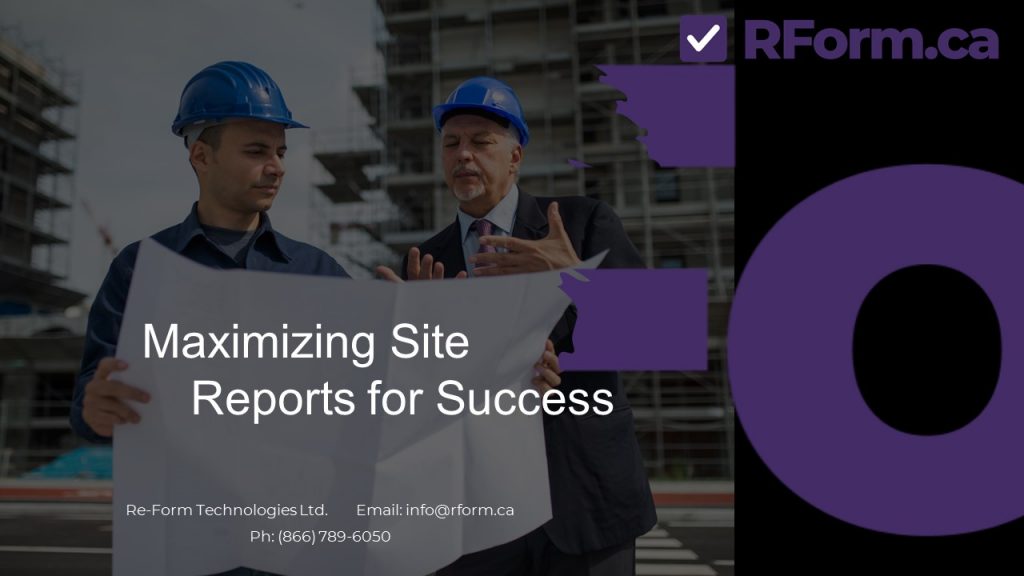
Effective client communication is not just a skill – it’s a necessity. Open and transparent communication builds trust, strengthens relationships, and ensures that all parties involved are working towards shared goals. This guide will delve into the strategies and tools that empower professionals to master client communication, focusing on how site reporting, as highlighted in RForm Bulletin 24-0518, helps with this process.
I. Establishing Clear Communication Channels: The foundation of successful client communication lies in establishing clear, well-defined channels. This ensures information flows smoothly, minimizes misunderstandings, and fosters a collaborative environment.
- Initial Expectations: During the onboarding process, clearly define preferred communication methods (email, phone, project management tools), response times, and escalation procedures.
- Communication Cadence: Set a schedule for project updates, progress reports, and check-in meetings. Consistency builds trust and keeps everyone informed.
- Communication Tools: Leverage technology to streamline communication. Project management platforms like Asana or Monday.com, video conferencing tools like Zoom or Microsoft Teams, and instant messaging platforms like Slack can enhance collaboration and accessibility. RForm’s Site Reporting feature further enhances this by providing a centralized platform for all communication and documentation, ensuring everyone can access the latest information.
II. Setting Expectations with Stakeholders: Managing expectations is crucial for client satisfaction. Open and honest communication sets the stage for a successful partnership.
- Project Scope: Clearly define the project’s goals, deliverables, timelines, and budget. A detailed project plan serves as a roadmap for all parties involved. RForm’s Site Reporting allows for real-time project progress tracking against this plan, enabling proactive adjustments and transparent communication of any changes.
- Stakeholder Involvement: Identify key stakeholders and their roles in the project. Communicate their responsibilities and decision-making authority. RForm facilitates this by providing a platform for all stakeholders to access project information and updates, ensuring everyone is on the same page.
- Risk Management: Proactively identify potential risks and challenges. Discuss mitigation strategies with stakeholders to manage expectations and build confidence. RForm’s Site Reporting aids risk management by flagging potential issues early, allowing for timely intervention and resolution.
III. Providing Regular Updates and Progress Reports: Regular updates demonstrate progress, transparency, and a commitment to keeping clients informed.
- Progress Reports: Provide concise, well-structured reports outlining project status, milestones achieved, upcoming tasks, and any potential roadblocks. Visual aids like Gantt charts or dashboards can enhance understanding. RForm automates the generation of these reports, saving time and ensuring accuracy.
- Communication Style: Adapt your communication style to the client’s preferences. Some prefer detailed reports, while others prefer concise summaries with key takeaways. RForm allows for the customization of reports to cater to individual preferences.
- Celebrating Milestones: Acknowledge and celebrate project milestones with stakeholders. This reinforces positive momentum and strengthens the relationship. RForm’s real-time updates make it easy to track and celebrate these milestones as they happen.
IV. Addressing Concerns and Resolving Issues Promptly: Challenges are inevitable in any project. Addressing them swiftly and transparently can strengthen client relationships.
- Active Listening: When concerns arise, listen attentively to the client’s perspective. Acknowledge their concerns and demonstrate empathy. RForm’s centralized communication platform ensures that concerns are documented and addressed promptly.
- Problem-solving: Collaborate with the client to effectively develop solutions that address their concerns. Provide regular updates on progress. RForm facilitates this collaboration by providing a space for all parties to contribute to the problem-solving process.
- Documentation: Keep detailed records of concerns, actions taken, and resolutions. This helps prevent misunderstandings and provides a reference point for future interactions. RForm automatically logs all communication and actions, creating a comprehensive audit trail.
V. Leveraging Technology for Effective Communication: Technology offers a wealth of tools to streamline client communication and enhance collaboration. RForm’s Site Reporting feature is a prime example of how technology can be leveraged to achieve client communication mastery.
- Real-Time Data: RForm provides up-to-the-minute data on project progress, allowing for proactive decision-making and timely issue resolution.
- Centralized Collaboration Platform: RForm is a single source of truth for all project information, facilitating seamless communication and stakeholder collaboration.
- Visibility into Project Progress: RForm offers a comprehensive view of project progress, enabling effective monitoring and risk management.
VI. Nurturing Relationships through Active Listening: Active listening is more than just hearing words – it’s about understanding the message and the emotions behind it and responding thoughtfully. RForm’s Site Reporting feature enhances active listening by providing a platform for documenting and addressing client concerns.
- Focus: Give your undivided attention to the client. Avoid distractions and interruptions.
- Reflect: Paraphrase and summarize what you hear to ensure understanding and show that you value their input.
- Respond: Address concerns directly and offer solutions or next steps.
VII. Seeking Feedback and Continuous Improvement: Feedback is a gift. Actively seek it out and use it to refine your communication approach. RForm’s Site Reporting feature facilitates this by providing a platform for collecting and analyzing client feedback.
- Surveys: Conduct regular client satisfaction surveys to gauge how well you meet their communication needs.
- Post-Project Reviews: After a project concludes, hold a review meeting to discuss what worked well and what could be improved.
- Open Door Policy: Encourage open communication and feedback at all times. Let clients know you value their input and are committed to continuous improvement.
Conclusion: Mastering client communication is an ongoing journey. By implementing the strategies and tools outlined in this guide and leveraging the power of RForm’s Site Reporting feature, you can build stronger relationships, deliver exceptional service, and achieve greater success in your professional endeavours.

